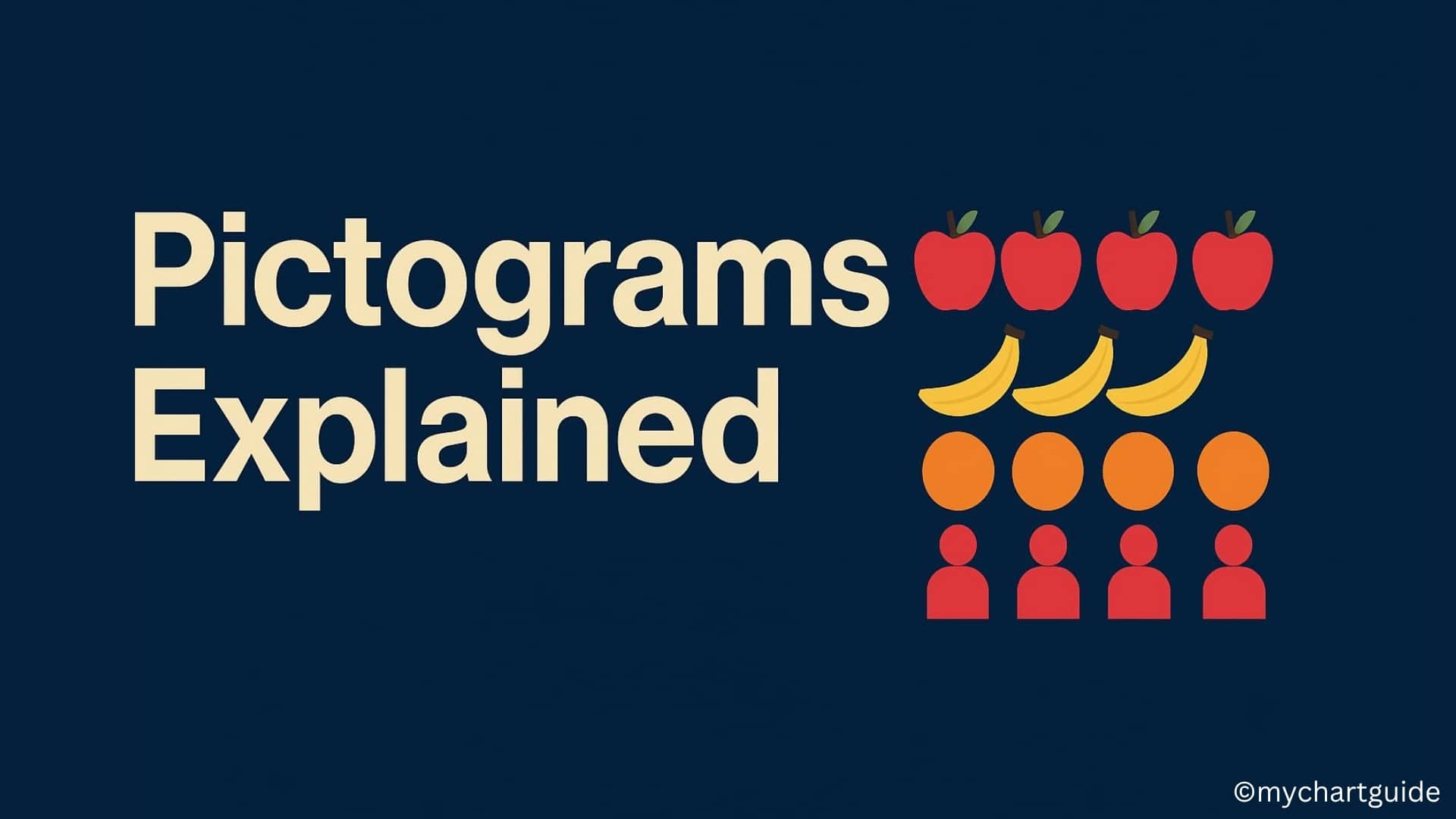We live in a world where visuals dominate our communication—from road signs to digital dashboards. Among the simplest and most impactful forms of visual communication is the pictogram. Whether in textbooks, business reports, or public signage, pictograms convey information quickly and clearly. But what exactly is a pictogram? How is it different from other charts? And how can you create one?

This blog dives deep into what pictograms are, their uses, how to create them, and why they’re essential in data visualization and everyday communication.
Contents
What is a Pictogram?
A pictogram (or pictograph) is a graphical representation of data using iconic images or symbols to show quantities. Each symbol represents a specific number of units, and multiple icons can be repeated to represent larger amounts.
Rather than relying on bars or numerical values, pictograms use easily understood visuals to make data more engaging and accessible, especially for audiences who may not be familiar with graphs or charts.
Example:
If you’re representing student performance, one book icon might represent 10 students who passed a test. If 40 students passed, you’d show 4 book icons.
Why Use a Pictogram?
Pictograms are widely used because they are:
- Visually engaging: They catch the eye and are memorable.
- Easily understood: No need to interpret scales or complex data.
- Great for storytelling: They simplify communication across language barriers.
- Accessible to all ages: Perfect for children, non-experts, and multicultural audiences.
Common Uses of Pictograms
Pictograms are used in a wide range of fields, such as:
1. Education
Teachers use pictograms in classrooms to explain concepts like counting, surveys, or simple statistics. They’re helpful for visual learners and early education.
2. Business Reports
Infographics often include pictograms to illustrate customer demographics, product use, or survey data in an appealing format.
3. Public Signage
Government agencies use universal pictograms in signage to convey messages like “No Smoking,” “Restrooms,” or “Emergency Exit.”
4. Healthcare
Medical professionals and NGOs use pictograms in awareness campaigns—for example, to represent vaccination statistics.
5. Media and Journalism
News websites and newspapers use pictograms in infographics to simplify data-heavy stories and attract readers.
How to Make a Pictogram
Creating a pictogram can be done manually or with the help of digital tools. Here’s how:
Step 1: Collect and Organize Data
Start with reliable and well-structured data. Identify the categories and values you want to represent.
Step 2: Choose Your Icon
Select a simple, recognizable icon relevant to the data. For example, use:
- 🍎 for apples
- 👩 for people
- 💡 for ideas or innovations
Make sure the icon is easy to understand at a glance.
Step 3: Determine the Scale
Decide what one icon represents. Common scales include:
- 1 icon = 10 units
- 1 icon = 100 units
Maintain the same scale throughout the pictogram.
Step 4: Design Your Layout
Place icons in a row or grid format for easy comparison. You can group similar categories together, use labels, and include a legend explaining the scale.
Step 5: Use Tools or Software
You can use software like:
- Visme
- Canva
- Piktochart
- Microsoft Excel or Word
- Infogram
These tools allow easy drag-and-drop design with built-in icons.
Step 6: Add Titles, Legends, and Labels
Clearly label each category, include a legend for icon scale, and add a descriptive title.
Best Practices for Creating Pictograms
To ensure your pictogram is clear and professional:
- Use consistent icon sizes – Avoid resizing symbols.
- Use relevant icons – Match icons with the data type.
- Don’t overcrowd – Keep it readable and avoid too many icons.
- Maintain proportion – Ensure icon counts accurately reflect the data.
- Add context – Use titles, subtitles, and sources.
Pictogram vs. Other Charts
| Feature | Pictogram | Bar Chart | Pie Chart |
|---|---|---|---|
| Visual Symbols | Icon-based | Rectangle bars | Slices of circle |
| Data Interpretation | Easier for basic data | Better for precision | Good for percentages |
| Best For | Younger audiences, infographics | Business analysis | Proportional data |
| Visual Appeal | High | Moderate | High |
Advantages of Pictograms
- Makes data visually compelling
- Easy for children and non-technical users to grasp
- Language-neutral communication
- Great for print and digital media
Limitations of Pictograms
- Not suitable for very large datasets
- Can be misleading if icons are not to scale
- Difficult to show exact numerical values
- May require explanation (legend, title)
Real-World Example of a Pictogram
Survey Result: Favorite Fruit Among 100 Students
| Fruit | Number of Students | Pictogram (1 🍎 = 10 students) |
|---|---|---|
| Apples | 40 | 🍎🍎🍎🍎 |
| Bananas | 30 | 🍌🍌🍌 |
| Oranges | 20 | 🍊🍊 |
| Grapes | 10 | 🍇 |
This pictogram instantly shows that apples are the favorite, followed by bananas, oranges, and grapes.
Tools to Create Pictograms Online
| Tool | Key Features | Free Plan |
|---|---|---|
| Visme | Charts, icons, drag-and-drop, export options | ✅ |
| Canva | Infographic templates, icon sets, easy to use | ✅ |
| Piktochart | Data visualization tools, user-friendly UI | ✅ |
| Infogram | Rich in charts, interactive features | ✅ |
| Adobe Express | Design-focused, great templates | ✅ |
Conclusion
Pictograms are one of the most powerful ways to present data in a way that’s clear, engaging, and universally understandable. Whether you’re a teacher, marketer, or data analyst, mastering the art of creating effective pictograms can significantly improve how your audience engages with your content.
So next time you’re dealing with simple data, try skipping the spreadsheet—and reach for icons instead.
